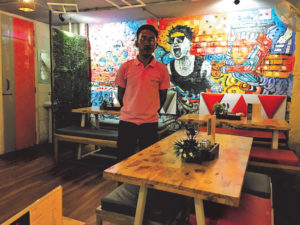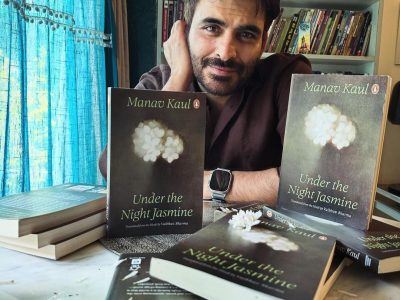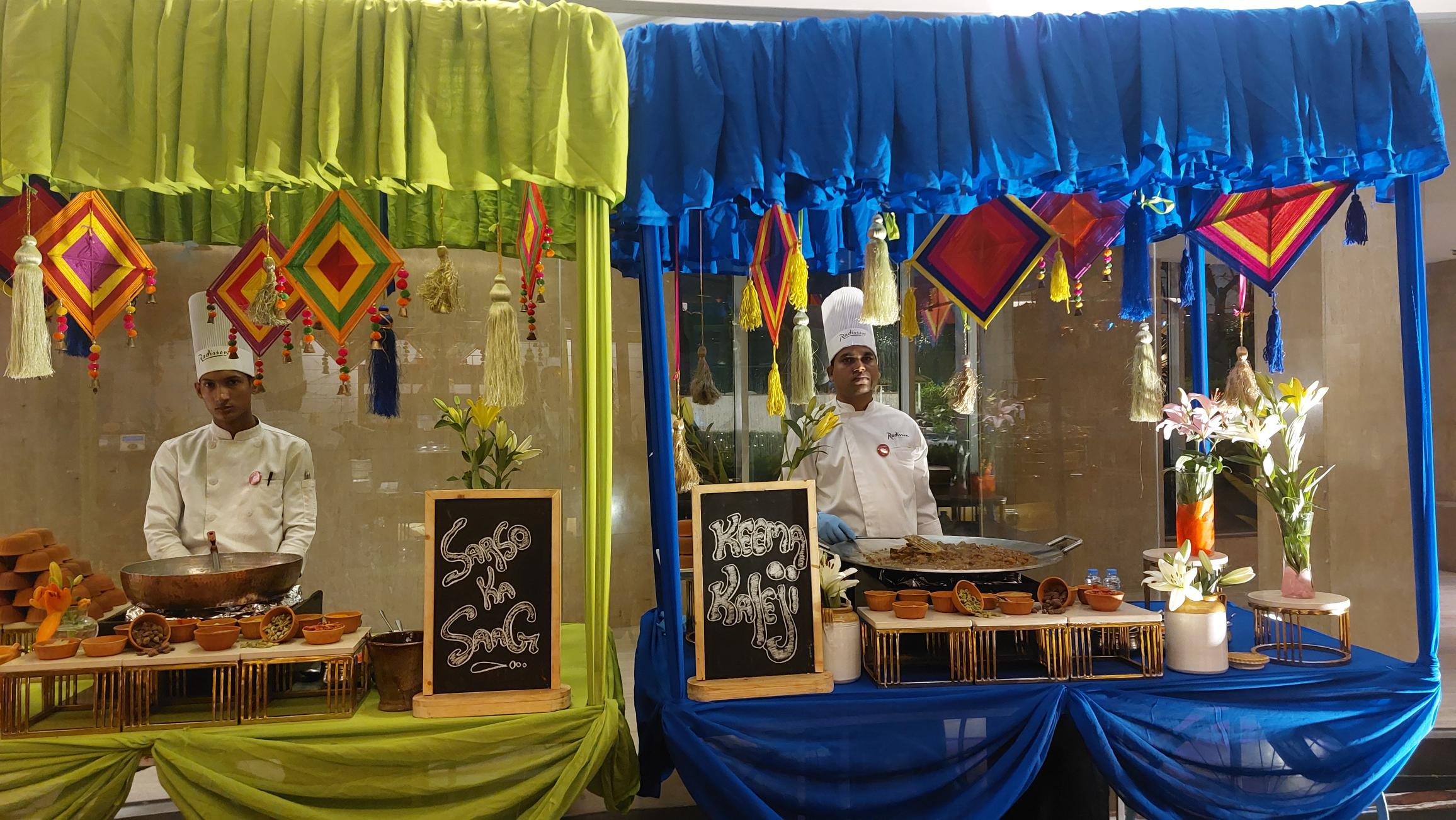People of varied ethnicities and nationalities huddle together in exclusive enclaves within the Capital, recreating their culture and cuisines far from home
Delhi is truly cosmopolitan. If you want to experience a foreign culture without having to travel abroad, you can do it right here. The city has this incredible capacity to absorb exotic cultures with their essence intact.
Mostly, it is the urban villages in Delhi which have become exclusive enclaves for various ethnic groups. From the outside, they look like congested places with tall thin buildings where people from a particular ethnicity live, but for their inhabitants, they are cosy mohallas (neighbourhoods) where they get their own type of food, traditional clothes and textiles, provisions, even a place of worship. Like there’s a Synagogue in Paharganj, that over the years became a Jewish-Russian ghetto, one of the oldest foreign enclaves in Delhi.
Many Paharganj kind of settlements have sprung up in various parts of the city where locals who own property — mostly Jats, Punjabis and Gujjars — rent out their homes to people of varied ethnicities.
Not many Delhiites know about Humayunpur, an urban village hidden behind the posh locality of South Delhi’s Safdarjung Enclave. Lately, it has become a venue of melting pot of various cultures of East Asia. There are Japanese and Koreans restaurants, as well as eating joints from the states of Manipur, Mizoram, Naga and Assam. More than 2,000 people from these areas live here. The shops also keep provisions like the typical rice used for making rice beer, herbs and spices so peculiar to the North-eastern states of India — like the famous Raja Mircha.
“I feel at home here,” says Lobsang, 24, a student of Delhi University who hails from Manipur. Sometimes he even forgets that he’s in Delhi after he enters Humayunpur.

Korean restaurants are doing very well here — there are at least a dozen of them- among those are Little Seoul, Koris and Dongne The Town. The latter’s owner is Yun Seongho, who has been living in NCR for the last eight years. He is not short on ambition, for he says, “I want to popularise Korean food in India.” The staff at his restaurant are from Manipur and Nagaland. They feel that Korean cuisine has the same flavours as their own food. Seongho says he is not here by chance: he deliberately chose a North-east mohalla to run his restaurant, for people from the seven sister states have similar food palates. Crisp Kimbap and Kimchi fried rice are already a hit with the locals.
Japanese food is also available in some multi-cuisine, primarily Asian-Mediterranean restaurants like Local Global. The Wizo Puppy Mousse is in big demand. “It’s an edgy and funky place with great interiors. I like it here more than the Hauz Khas Village, that’s crowded with loud wannabes,” says Anshuman Sinha, a banker who works in South Extension. He comes here often, his favourite dishes being “juicy and tender pork and chicken dimsums.”
What’s amazing is that this is a place that has imbibed the spirit of East Asian and Northeast India. The designer showrooms, the provision stores are reminiscent of shops in Imphal, the aroma that fills the lanes and bylanes is that of the mountains, the attire, the language people speak on the streets, is anything but Delhi. Walk the street that starts from the NCC gate side and cuts across Humayunpur — there are an astonishing number of eateries: Agape — cafe and lounge, Hello Tibet, Club 69, the Categorical Eat Pharma, Lha Kitchen, to name a few. The rice beer at Naga Heritage Food is more than wonderful.

These eateries are nicely done up with native artifacts, some have graffitied walls. The decor is a reminder of the place they belong to but also is symbolic of their aspirations to make it big in Delhi. Tattoo studios punctuate the busy streets: Humayunpur is becoming famous as a venue to get quality tattoos done.
One of the interesting places to hang out is Cultured café — that invites people with positive vibes and energy. It indeed is a cheerful place, which during the day becomes a workspace for many freelancers, who work while sipping coffee and meet their clients here. A true cultural melting pot — a big counter just as you enter, modern furniture, ethnic decor, aroma of coffee hangs low, and friendly staff that doesn’t urge you to order soon after you enter.
“This is not a ghetto. I get to meet all kind of people here,” says Lobsang, 27, from Kohima. He came to Delhi three months ago and already feels that this city has many opportunities to offer. He also gets to sample “dipsums that are homemade like.”
Then there is dusty Rajpur Khurd, an urban village close to Chhattarpur, a ghetto for Nigerians. The landlords charge extra if an African tenant, primarily Nigerians, don’t have requisite papers — many of them have escaped their country out of desperation and returning is not an option. A significant number of them are illegal immigrants.

Like Adebiyi, 34 years, from Nigeria, who lives in a two-room flat on the first floor with his wife Ezichi and two children less than 5 years of age. He pays twice the rent because his wife’s visa has expired. Almost hidden, this locality houses at least 500 Nigerians, many of them are illegal immigrants, staying on as long as they can manage. It’s a closed community, with everyone protecting everyone else.
Though Nigerians mostly hang out amongst themselves, and complain of daily racism, there’re fairly outdoorsy. They play football in the evening on a dusty patch of land despite the oppressive heat. They listen to music, eat out and make merry. They have many of these floating restaurants —the living rooms become a makeshift eating joint for a week or two, on the lines of a bar-cafe, but open only after sundown. Nigerians party while sampling native food, black soup being the most popular delicacy—big chunks of fish or meat served in spicy broth. All of it is illegal, so they insist, if an Indian is a guest, they don’t take pictures.
A select few Indians are welcome, usually accompanied by a Nigerian friend. The Indians are usually sons of the landlords, agents who get them houses and help them with paperwork.
What’s fairly evident is that their reaction to adversities in life is to huddle together. A society with comparative gender parity, they seem to be happy people who love their food and drink beer instead of water during meals. “I have a positive attitude towards life,” says Biju, 25, a drummer, who’s in Delhi for a knee replacement surgery, but so far has not been able to garner sufficient resources for it. Walking these dusty lanes parched by the sun, one gets the feeling of a typical small town in North India but with an acquired spirit of Africa.

These are just few examples of a city of composite cultures. There are similar ghettos of Afghan people, the French hold their own roof-top parties in Jungpura, Tibetans have a township in Majnu ka Tila —which looks like monastery town Lhasa without the mountains. Lajpat Nagar has a closed group of Italians…
On a rainy day, go explore.





